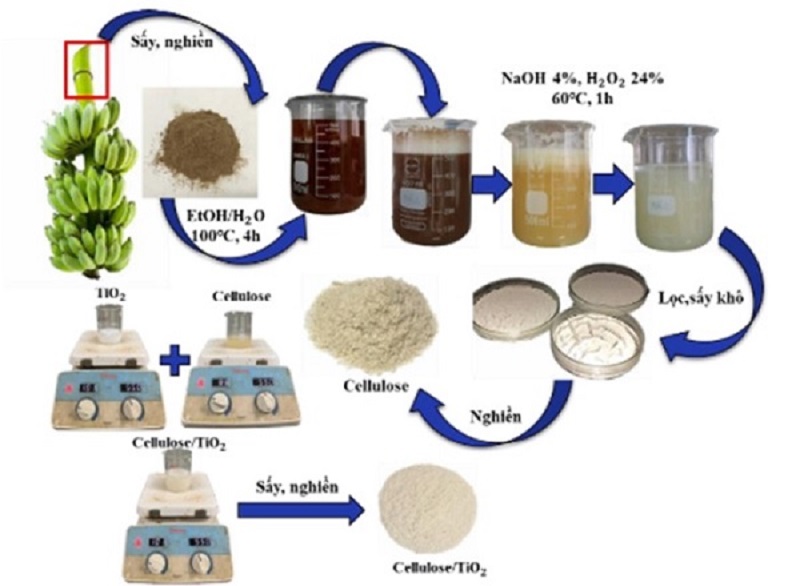Materials for detecting banned substances used in aquaculture from banana wastes
A research team from the Industrial University of Ho Chi Minh City has created an inexpensive material from banana wastes, specifically banana stalks (banana pulp), to detect and remove the toxic malachite green in aquaculture wastewater and shrimp products.

Synthesis process of cellulose/TiO₂ material. Photo: NNC
Banana pulp, which mainly contains cellulose (30-40%), is easy to harvest, cheap and easy to process, and is treated with acid and alkali to obtain cellulose and then mixed with TiO₂ to form a cellulose/TiO₂ material. This material has the ability to effectively adsorb malachite green thanks to the functional groups of cellulose and the negative charge of TiO₂, which helps attract the positively charged molecules of this substance.
The test results showed that the cellulose/TiO₂ material has a high adsorption capacity, reaching a maximum of 79.42 mg/g, far surpassing previous materials, such as graphene or TiO₂nano. After adsorption, malachite green was determined by the UV-Vis method at extremely low concentrations of only 0.023 mg/L, and this method gave high accuracy with a recovery rate of about 96%. Thanks to that, the material not only helps to detect effectively but also supports the control of toxic residues in the aquaculture environment, contributing to protecting public health.
This research not only provides a fast and accurate testing method but also contributes to the recycling of agricultural waste, creating cheap, easy-to-produce but highly effective materials in the field of aquatic food safety. The results were published in the Journal of Science and Technology of Ho Chi Minh City University of Industry in 2025, opening up a new direction in the application of biology and environmental technology.